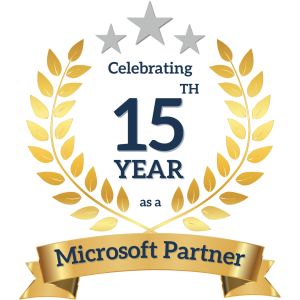Five Best Practices for Cloud Security
1. Adopting a Zero Trust Stance
What is Zero Trust?
- Verifying every user and device: Ensure that every user and device accessing your network is authenticated and authorized. This includes using strong authentication methods and continuously monitoring user behavior for anomalies. A cloud security service provider can assist in enhancing this process by offering advanced tools to verify access.
- Segmenting your network: Divide your network into smaller segments to minimize the impact of a potential breach. Network segmentation can help contain threats and prevent them from spreading across the entire network, which is essential for organizations that use cloud services.
- Monitoring and analyzing traffic: Continuously monitor and analyze network traffic for suspicious activity. Use advanced analytics and machine learning to detect and respond to threats in real-time. With security tools provided by your cloud security service provider, you can gain enhanced visibility into your traffic patterns.
- Enhanced security: By verifying every user and device, Zero Trust reduces the risk of unauthorized access and data breaches, which is especially important when using cloud services.
- Improved visibility: Continuous monitoring provides better visibility into network activity, helping identify and mitigate threats more effectively. This is critical in a security cloud services model where maintaining real-time insights is key.
Adaptability: Zero Trust adapts to the changing security landscape, making it suitable for modern, dynamic environments, particularly those relying heavily on cloud security services.
2. Institute Multi-Factor Authentication (MFA)
- Choosing the right MFA solution: Select an MFA solution that fits your organization’s needs and integrates seamlessly with your existing cloud infrastructure and managed IT services security.
- Educating your users: Ensure that users understand the importance of MFA and how to use it effectively. Provide training and resources to help users adopt MFA without frustration.
- Monitor and manage MFA: Regularly review and update MFA settings to address new threats and vulnerabilities. Monitor authentication logs for suspicious activity and respond promptly to any anomalies, especially in the context of security cloud services.
- Increased security: MFA significantly reduces the risk of unauthorized access to cloud security services, protecting sensitive data and systems from threats.
- Compliance: Many regulatory frameworks require MFA for certain types of data and systems, helping organizations meet compliance requirements, especially for cloud-based operations.
- User confidence: MFA provides users with confidence that their accounts are secure, enhancing trust in your cloud security risk management strategies.
3. Consolidate Identity and Access Management (IAM) Tools
- Centralized control: Manage all identities and access permissions from a single platform. This simplifies administration and reduces the risk of misconfigurations, which can be critical when utilizing cloud security services.
- Improved efficiency: Reduce the complexity of managing multiple IAM solutions. A centralized IAM platform allows for faster response to access requests and easier policy enforcement.
- Enhanced security: Quickly identify and respond to potential threats. Centralized IAM provides better visibility into access patterns and helps detect anomalies. A cloud security service provider can assist in monitoring and controlling access more effectively.
- Evaluate your current IAM solutions: Assess the effectiveness of your existing IAM tools. Identify gaps and areas for improvement.
- Choose a comprehensive IAM platform: Select a platform that offers robust features and integrates with your cloud services. Look for solutions that provide single sign-on (SSO), multi-factor authentication (MFA), and automated provisioning.
- Implement and monitor: Deploy the chosen IAM platform and continuously monitor its performance. Regularly review access policies and update them as needed to ensure security for cloud-based operations.
- Streamlined administration: Centralized IAM simplifies the management of user identities and access permissions, reducing administrative overhead.
- Improved security posture: A unified IAM platform enhances security by providing better visibility and control over access to cloud resources, especially when involving cloud security services.
- Scalability: Consolidated IAM solutions can scale with your organization, accommodating growth and changes in the security landscape.
4. Automate Least Privileged Access
- Reduces human error: Minimize the risk of incorrect access permissions. Automation ensures that access policies are consistently enforced, which is especially important in a security cloud services setup.
- Improve efficiency: Streamline the process of granting and revoking access. Automated tools can quickly adjust access rights based on changes in user roles and responsibilities.
- Enhance security: Ensure that users only have access to the resources they need. This reduces the attack surface and limits the potential impact of a breach, which is crucial for reducing cloud security risks.
- Use policy-based access controls: Define access policies based on roles and responsibilities. Ensure that policies are clear and enforceable.
- Leverage automation tools: Utilize tools that automatically enforce access policies. Look for solutions that integrate with your IAM platform and provide real-time adjustments.
Regularly review access permissions: Continuously assess and update access permissions to address changing needs. Conduct periodic audits to ensure compliance with access policies.
- Enhanced security: Restricting access to the minimum necessary reduces the risk of unauthorized access and data breaches, including those related to managed IT services security.
- Improved compliance: Many regulatory frameworks require least privileged access, helping organizations meet compliance requirements for their cloud-based resources.
- Operational efficiency: Automation streamlines access management, reducing administrative overhead and improving response times.
5. Enable Code-to-Cloud Security
- Cloud-native application protection platforms (CNAPP): Use platforms like Microsoft Defender for Cloud to safeguard applications across multicloud and hybrid environments. CNAPPs provide comprehensive security features, including threat detection, vulnerability management, and compliance monitoring.
- Continuous security assessment: Regularly assess your security posture and get actionable recommendations for improvement. Use tools that provide real-time insights into security gaps and vulnerabilities.
- Stakeholder communication: Keep stakeholders informed about your security efforts and progress. Create shareable, interactive reports to demonstrate improvements in your cloud security posture.
- Integrate security into DevOps: Embed security practices into your development and operations processes. Use DevSecOps principles to ensure that security is considered at every stage of the application lifecycle.
- Use cloud-native defenses: Leverage cloud-native tools and platforms to protect your applications. These tools are designed to work seamlessly with cloud environments, providing robust security features.
Monitor and respond: Continuously monitor your applications for threats and respond promptly to incidents. Use automated tools to detect and mitigate threats in real-time.
- Comprehensive protection: CNAPPs provide end-to-end security for cloud-based applications, ensuring they are protected throughout their lifecycle.
- Improved visibility: Continuous security assessment provides better visibility into your security posture, helping identify and address vulnerabilities.
- Stakeholder confidence: Regular communication with stakeholders builds confidence in your security measures and demonstrates your commitment to protecting cloud resources.
Recent Posts
Latest Blogs

Azure AI Foundry: Operationalizing Enterprise AI Agents at Scale
As enterprises move beyond AI experimentation, a clear shift is underway. CIOs and technology leaders are no longer asking if AI can help but how

Microsoft Licensing 101: How to Optimize Your Microsoft 365, Dynamics & Azure Investments
Licensing is one of the most underestimated drivers of IT cost efficiency. For many organizations, the hidden costs of unused seats, overprovisioned bundles, and idle

AI Agents Are Here: But Are They Working for You or Against You?
A Cloud 9 Guide to Securing the Agentic Era Artificial Intelligence has entered a new chapter, the age of autonomous AI agents. These agents schedule





 Visit India Website
Visit India Website